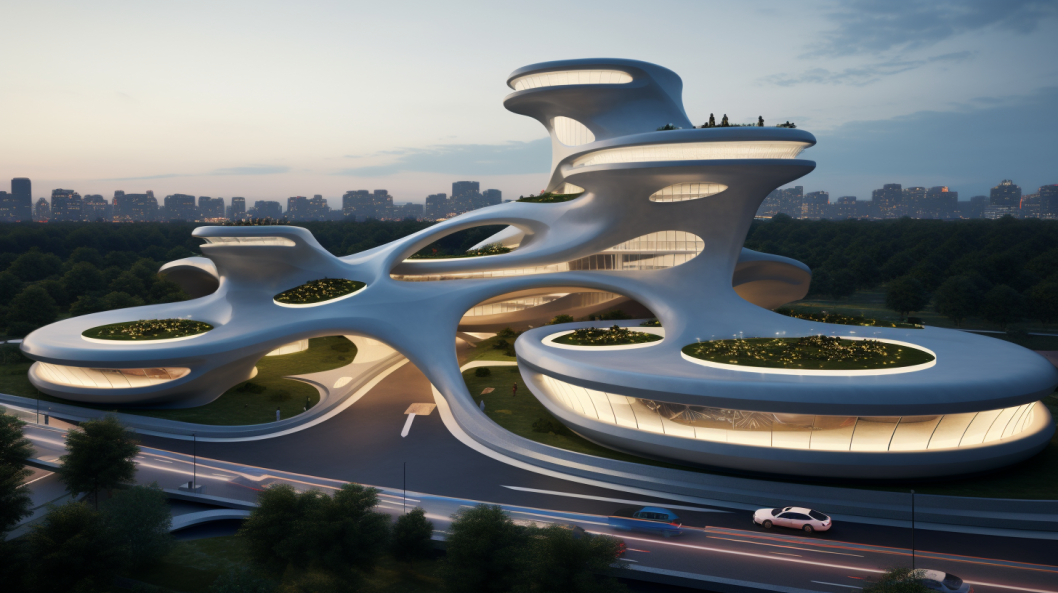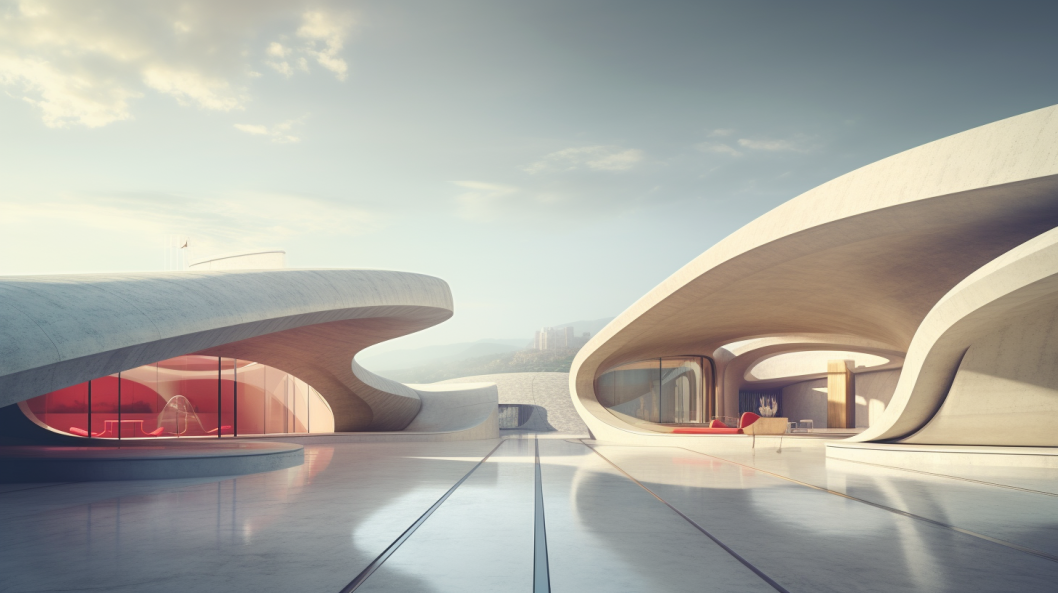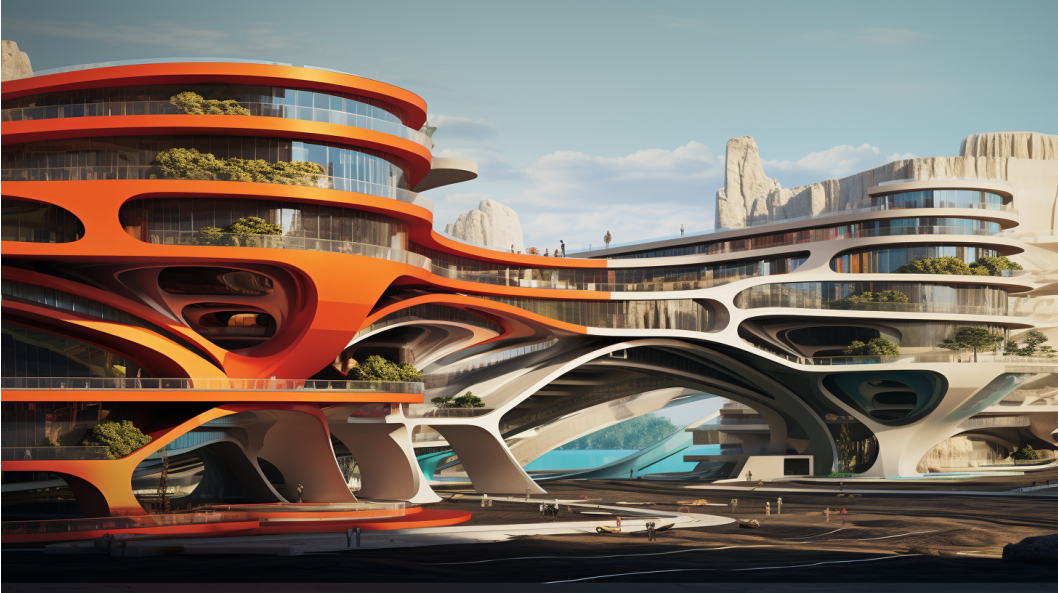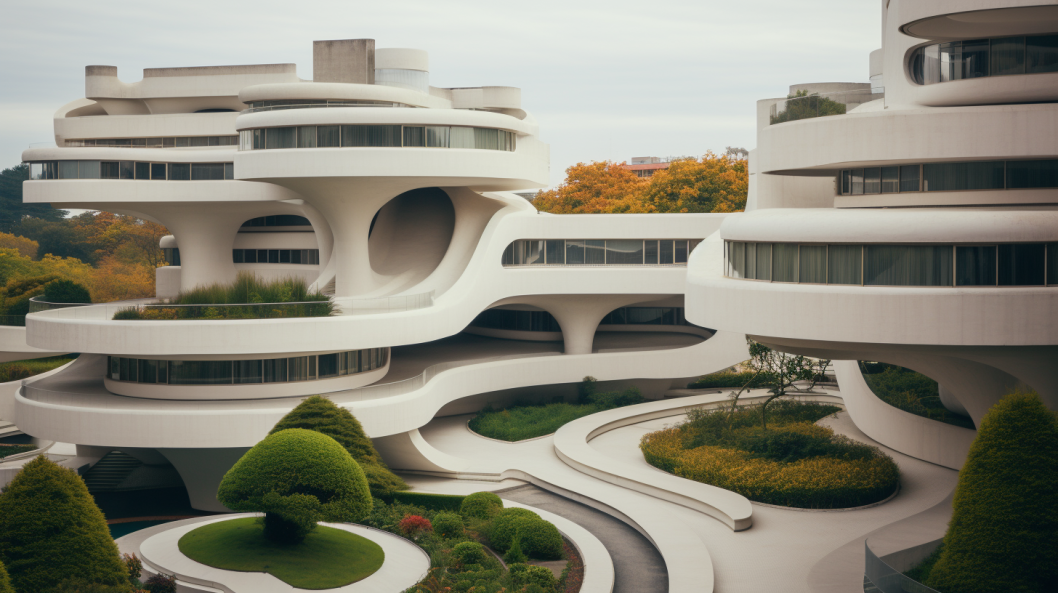Embracing the Complexity
As we traverse the evolutionary trajectory of design strategies, a wave of intricate forms and shapes has heralded a paradigm known as the Curvilinear Revolution. The notion fundamentally explores and admires complexity, weaving it seamlessly into modern design methodologies. From the sweeping curves of the Guggenheim Museum in Bilbao to the elliptical elegance of London’s Gherkin, curvilinear forms have eclipsed linear, stark geometries, embodying a myriad of symbolic, aesthetic, and functional attributes.

Historical Context and Initial Transition
Historically, modernism, particularly in architecture and design, leaned towards linear and simplified geometries. The ease of construction, calculation, and minimization of materials used were prime incentives. The Bauhaus Movement, for instance, adored simplicity and function, embedding an aesthetic that loomed large for most of the 20th century.
The transition from the austere geometries of modernism to embracing curvilinear, complex designs, marks a significant shift. With advancements in technology, particularly in computational design tools and manufacturing processes, the creation of complex, curvilinear forms became more achievable and less constrained by technical limitations.
Symbolism and Aesthetics of the Curvilinear
Curvilinear designs invoke a spectrum of symbols and metaphors. They promote a sense of fluidity, movement, and naturalism, often establishing a stark contrast to the rigid, unyielding straight lines and sharp angles of conventional structures. These forms could suggest adaptability, evolution, and a break from traditionalism, offering a new visual vocabulary that communicates innovation and forward-thinking.
The aesthetics emanating from curvilinear forms evoke emotional responses that are often associated with elegance, flow, and dynamism. There is an inherent grace to curves, providing a visual ease that is both pleasing and captivating to the eye, establishing a gentle dialog between the structure and the observer.
Functional and Environmental Dimensions
Beyond symbolism and aesthetics, curvilinear forms bring tangible functional and environmental benefits. Curved surfaces can enhance aerodynamics, reduce wind loads, and optimize energy performance by minimizing direct solar gain. Moreover, from an urban perspective, these forms can create unique spatial experiences, molding spaces that are both utilitarian and aesthetically profound.

Technological Drivers Behind the Curvilinear Revolution
The ability to realize complex geometries is deeply intertwined with technological advancements. Computational design, digital fabrication, and innovative material science have been key enablers in the curvilinear revolution. Sophisticated algorithms can now optimize forms for structural efficiency, environmental performance, and aesthetic impact, allowing designers to manipulate shapes and forms with unprecedented control and precision.
Moreover, advancements in BIM (Building Information Modeling), 3D printing, and robotic construction have made it feasible to bring these complex shapes from the digital realm into physical reality. Such technologies allow for a level of detail and precision that was previously unimaginable, enabling designers to push the boundaries of what is possible.

Challenges and Criticisms
Despite the awe-inspiring possibilities, the curvilinear revolution is not without critique. Questions regarding cost, material usage, and practicality often bubble to the surface. Is the pursuit of complexity diverting attention from other critical aspects such as sustainability, social impact, and accessibility in design? It ignites a debate on whether form should follow function or if the symbolic and aesthetic virtues of curvilinear designs justify the means.
Beyond the Curve - What Lies Ahead?
The curvilinear revolution underscores a poignant moment in design where complexity is not merely accepted but celebrated. The melding of aesthetics, symbolism, and technology unfolds a rich tapestry where designers sculpt our built environment with an expressive freedom that was once constrained by the linear dogmas of the past.
However, as we sail on the curvilinear wave, it is crucial to navigate with a mindful balance, ensuring that the complexity does not overshadow functionality, sustainability, and social responsibility. The curvilinear design, while a potent strategy, must be employed judiciously, forging paths that not only mesmerize with form but also resonate with purpose, ethics, and inclusivity.
The future of design thus lies in harnessing the curvilinear revolution within a framework that respects both the art and science of creating spaces, ensuring that the complexities of our designs mirror the multi-faceted nature of our societies and environments.

